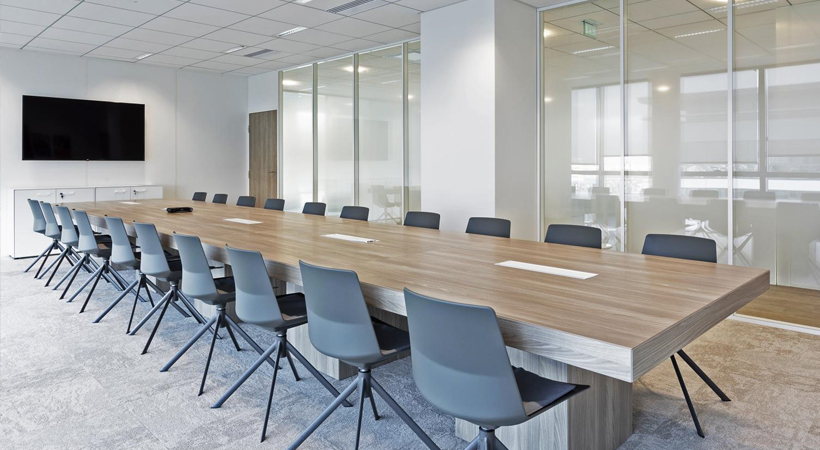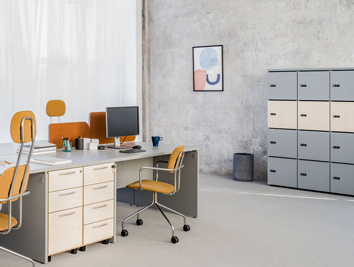A well-designed conference room not only impresses your clients and visitors but also creates a positive and productive environment for your team. In this article, we will explore meeting room layouts to help you choose the most suitable option for your business.
Despite the changes and trends in office layout, the area where meetings happen continues to be important. Many businesses utilise the room for multiple purposes, then called a meeting room, training room, or boardroom.
Make your conference room look professional
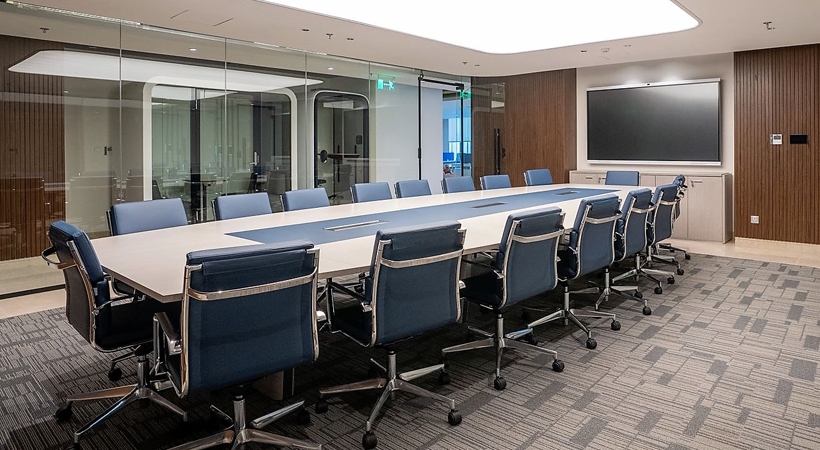
The layout of your conference room can significantly impact the success of your meeting. A well-planned design can improve communication, increase engagement, and boost productivity.
Some meeting room layouts favour all-around communication, while others are designed for one main speaker or to accommodate multimedia better.
Here are some popular meeting room layouts:

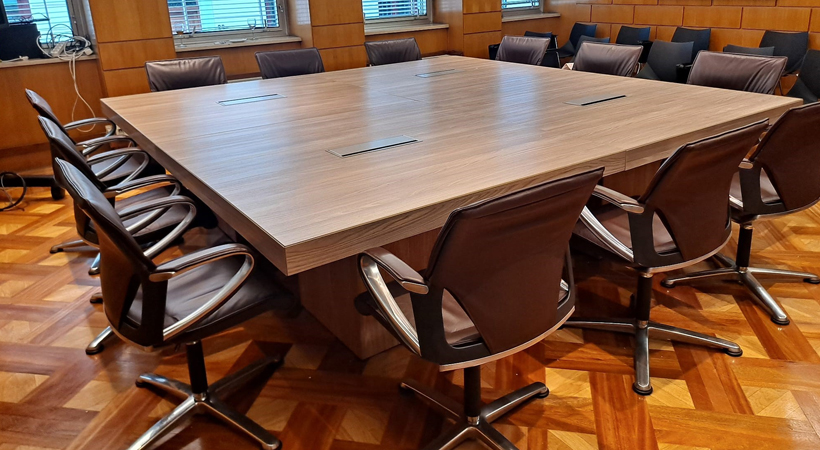

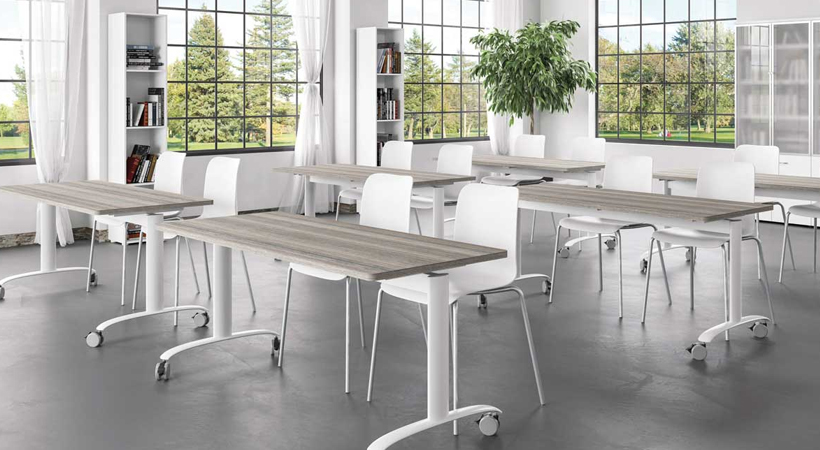
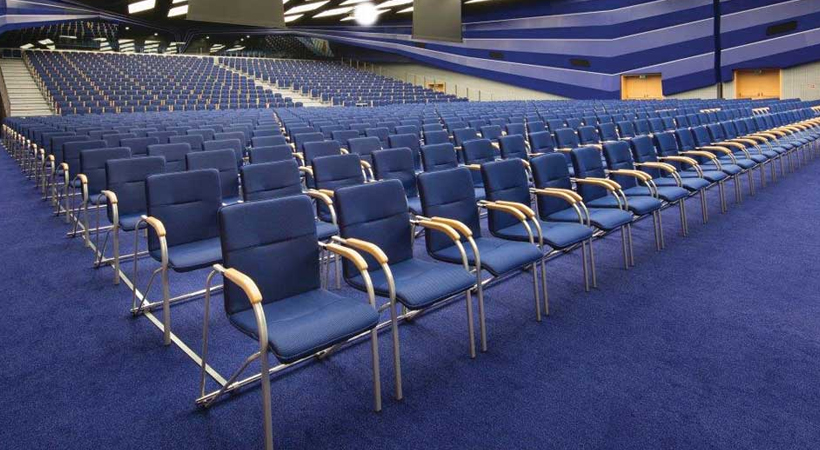
Boardroom layout: This is the most traditional layout and involves a large table in the centre surrounded by chairs. This layout is ideal for formal meetings, presentations, and negotiations.
U-Shape layout: This layout involves a long table in a U-shape with chairs around it. This layout is ideal for group discussions, brainstorming sessions, and workshops.
Classroom layout: This layout involves rows of tables and chairs facing a presentation screen or whiteboard. This layout is ideal for training sessions, workshops, and lectures.
Theatre layout: This layout involves rows of chairs facing a stage or a large screen. This layout is ideal for large presentations, seminars, and conferences.
Boardroom Tables
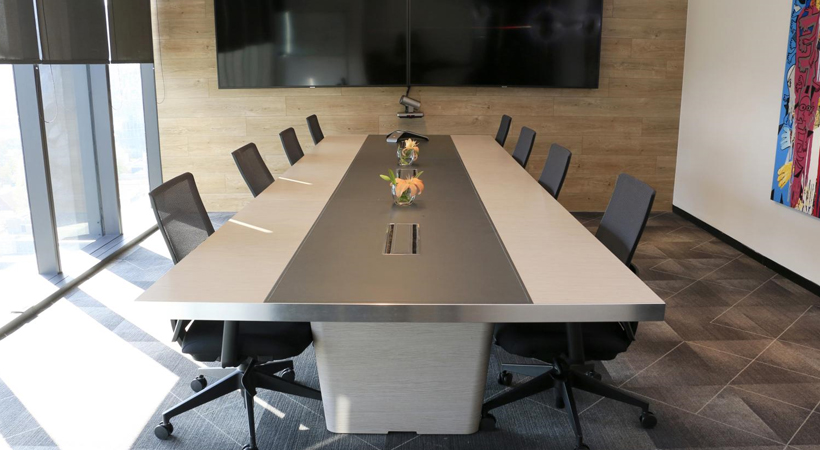
The boardroom table is the centrepiece of your conference room, and choosing the right table is essential to create a professional-looking space.
Here are some factors to consider when choosing a boardroom table:
Size: The table size should be proportionate to the size of the room and the number of people using it most of the time.
Shape: The table’s shape should complement the room’s layout. For example, a rectangular table is ideal for a boardroom to close deals and conduct formal meetings. In contrast, a round table will suit a room used more frequently for internal staff meetings and training as it promotes casual communication.
Material: The material of the table should be durable and easy to clean. Wood, glass, and metal are popular choices for boardroom tables.
Style: The table’s style should match the company’s overall aesthetic. A conference room matching the business identity will contribute to closing better deals. Traditional or modern are popular choices for boardroom tables.
In conclusion, creating a professional-looking conference room requires careful planning and attention to detail. You can create a productive and welcoming space for your team and clients by choosing the proper meeting room layout and boardroom table.
Our specialised team is available for a free consultation to help you find the best solution for your office. In addition, we have customised options to fit various preferences and needs.

